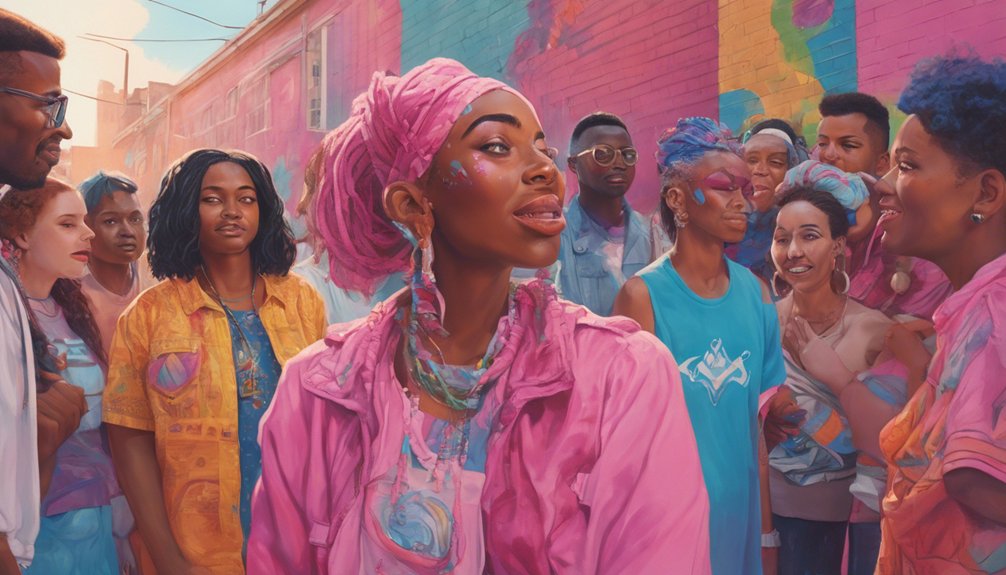Why Society Can’t Look Away: The Cultural Obsession With Trans People


Table of Contents
ToggleYou might not realize that a staggering number of anti-trans bills have been introduced across the U.S. in recent years, often fueled by deep-seated fears and misunderstandings. This cultural obsession with trans individuals doesn’t just stem from curiosity; it reveals a troubling narrative that paints their identities as threats. As you investigate this complex issue, consider how media portrayals and societal anxieties shape the discourse around trans lives and rights. What does this mean for our understanding of acceptance?
As conversations about gender and identity have gained momentum, anti-trans sentiment has surged in public discourse, creating a complex and often hostile environment for the trans community. In 2025, over 100 anti-trans bills were proposed in the U.S., marking a historic peak. Many perceive discrimination against transgender individuals, yet a significant portion believes society has gone too far in accepting them. This contradiction fuels a narrative that frames transgender identities as threats, particularly regarding sex-segregated spaces. Media portrayals often sensationalize trans experiences, overshadowing the daily realities trans individuals face. This objectification and invasive questioning perpetuate harmful stereotypes and contribute to a culture that undermines transgender rights, making it essential to foster understanding and empathy in discussions surrounding these issues.
Throughout history, societies have often viewed trans individuals through a lens of objectification and fear, which has perpetuated cycles of discrimination and violence. You might notice that this pattern echoes the treatment of other marginalized groups, like Black people and LGBTQ+ individuals. Transgender identities have frequently been framed as deviant, fueling invasive scrutiny and harmful stereotypes. These narratives often emerge from unfounded psychosexual theories that lack scientific backing. Legislative attacks on trans rights have surged, reflecting society’s obsession with regulating trans lives. This discomfort with gender nonconformity persists, revealing a deep-seated fascination that breeds discrimination. Acknowledging these historical patterns is vital, as they highlight the need for empathy and understanding in discussions about trans rights today.

While media can serve as a powerful tool for advocacy and education, it often falls short in accurately representing transgender people, leading to widespread misconceptions. Sensationalized portrayals dominate mainstream narratives, overshadowing the everyday realities of trans lives. For instance, when trans women are objectified or sexualized, it perpetuates harmful stereotypes, fueling societal fears and misunderstandings. Furthermore, invasive questioning about their bodies becomes normalized, dehumanizing these individuals and reinforcing anti-trans sentiments. This misrepresentation not only affects public perception but can exacerbate transphobia, especially among vulnerable populations. As you consume media, it’s essential to recognize these patterns and challenge them, fostering a more compassionate and informed understanding of transgender people and their diverse experiences.
Media’s sensationalized portrayals of transgender individuals contribute to a distorted view of their realities, making it easy for society to target this marginalized group absurdly. The absurdity lies in focusing animosity on the trans community, a group constituting less than 1% of the population. Instead of addressing systemic issues, over 100 anti-trans bills were proposed in 2021 alone.
| Absurdity of Targeting | Examples |
|---|---|
| Misconceptions about Threats | Viewing trans individuals as a danger to children |
| Legislative Focus | Targeting a small demographic with over 100 bills |
| Discrimination Recognition | 80% of U.S. adults acknowledge bias against trans individuals |
This irrationality not only harms the trans community but also reflects broader societal fears that need addressing.

Engaging in civil debate about transgender issues is vital for fostering understanding and acceptance, especially since a significant number of Americans recognize the discrimination faced by this community. By opening discussions around gender identity, we can bridge gaps and cultivate empathy. Here are some key points to reflect on:
When we engage respectfully, we not only challenge misconceptions but also create a supportive environment for all.
You might think regret after changing is a tidal wave sweeping through the trans community, but it’s actually more like a gentle ripple. Studies show that only about 1% to 3% of trans individuals experience regret post-change. It’s often external pressures, not the change itself, that cause these feelings. Most folks report satisfaction, highlighting the importance of support and informed consent throughout their path. So, the narrative of regret is way overblown!
Society shapes your understanding of gender identity through cultural narratives, education, and media representation. As you engage with diverse viewpoints, you might find your perceptions evolving, especially with younger generations advocating for inclusivity. Conversations about gender in schools and social spaces expose you to different identities, challenging traditional norms. Ultimately, the way society discusses and depicts gender influences how you perceive yourself and others, fostering a more accepting environment.
You might not realize it, but society plays a huge role in shaping your feelings about gender identity. When you face negative stereotypes or discrimination, it can heighten feelings of gender dysphoria. Imagine growing up in a world where your true self isn’t accepted; that pressure can weigh heavily on you. By fostering acceptance and understanding, society can help lessen that discomfort and support individuals in embracing their authentic identities.
In a world where nearly 80% of trans youth report feeling unsafe at school, it’s clear that our obsession with their identities often stems from fear rather than understanding. Instead of perpetuating harmful narratives, let’s shift our focus to the real challenges they face every day. By fostering open conversations and embracing acceptance, we can help create a society where everyone, regardless of their identity, feels safe and valued. It’s time to listen, learn, and stand together.
 News and AdvocacyNovember 14, 2025Rainbow Victories: 2025’s Most Pro-LGBTQ+ States Revealed
News and AdvocacyNovember 14, 2025Rainbow Victories: 2025’s Most Pro-LGBTQ+ States Revealed News and AdvocacyNovember 14, 2025Transgender Sanctuary States: Protecting Rights, Providing Hope
News and AdvocacyNovember 14, 2025Transgender Sanctuary States: Protecting Rights, Providing Hope Featured PostsNovember 13, 2025When Restroom Policing Backfires: The Hotel That Went Too Far
Featured PostsNovember 13, 2025When Restroom Policing Backfires: The Hotel That Went Too Far Featured PostsNovember 13, 2025Sex, Safety, and Seduction: A Trans Girl’s Guide to Hookups
Featured PostsNovember 13, 2025Sex, Safety, and Seduction: A Trans Girl’s Guide to Hookups